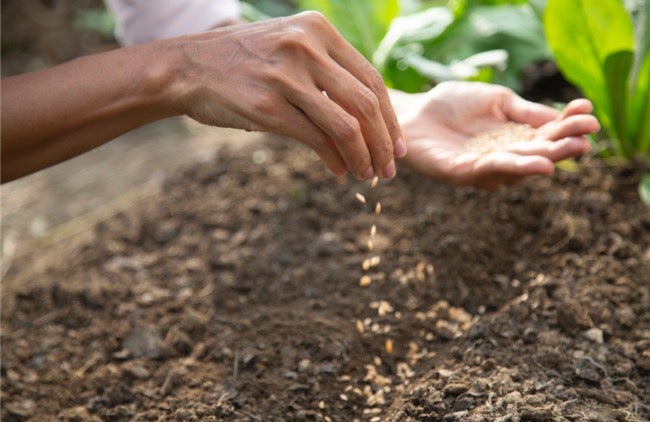Seed Swapping and Sharing Communities: A Guide to Connecting with Fellow Gardeners
Introduction:
In today’s world, where technology dominates our lives and instant gratification is the norm, there is a growing movement of people seeking a connection to nature and sustainable living. One way this desire manifests itself is through seed swapping and sharing communities. These communities provide a platform for gardeners of all levels of experience to connect, exchange seeds, knowledge, and foster a sense of community. In this guide, we will explore the benefits of seed swapping and sharing communities, how they operate, as well as tips for getting involved.
1. What are Seed Swapping and Sharing Communities?
Seed swapping and sharing communities are networks or groups formed by individuals passionate about gardening who come together to share their surplus seeds with one another. The idea behind these communities is that instead of buying new seeds each year or relying solely on commercial varieties, gardeners can exchange heirloom or open-pollinated seeds with fellow enthusiasts.
2. Benefits of Joining Seed Swapping Communities:
2.1 Diverse Plant Varieties:
One key advantage of participating in seed swapping communities is access to an extensive variety of plants that might not be readily available commercially. By exchanging seeds with others in your community, you can gain access to unique cultivars passed down through generations or rare plant species from different parts of the world.
2.2 Cost-Effective Gardening:
Purchasing new seeds every season can quickly add up expenses for avid gardeners. However, by engaging in seed swaps within your community, you can significantly reduce costs associated with buying new packets each year while still having an abundance of diverse plants in your garden.
2.3 Preservation of Heirloom Seeds:
Many seed swapping groups focus on preserving heirloom varieties that have been cultivated for decades or even centuries due to their unique flavors or characteristics which may have been lost over time if not kept alive through cultivation. By participating in these communities, you contribute to the conservation of our agricultural heritage.
2.4 Knowledge Sharing and Learning:
Seed swapping communities provide an excellent opportunity for gardeners to learn from each other’s experiences and share their knowledge. Members are often willing to offer advice, growing tips, or insights into specific plant varieties that they have successfully grown in their own gardens. This exchange of information can be invaluable for both beginners and experienced gardeners alike.
3. How Seed Swapping Communities Operate:
3.1 Local Events and Meetups:
Many seed swapping communities organize local events or meetups where members can physically gather to exchange seeds, plants, gardening tools, and knowledge face-to-face. These events often feature guest speakers or workshops on various gardening topics as well.
3.2 Online Platforms and Websites:
In addition to physical gatherings, many seed swapping communities also operate online platforms or websites that allow members to connect virtually with fellow gardeners from around the world. These platforms typically include forums or chat rooms where members can discuss gardening techniques, ask questions, and arrange seed exchanges by mail.
3.3 Rules and Guidelines:
To maintain a fair system within seed swapping communities, certain rules and guidelines are usually established regarding the quality of seeds exchanged, packaging requirements, shipping procedures (in case of mail exchanges), etc. It’s essential to familiarize yourself with these rules before participating in any swap to ensure a positive experience for all involved parties.
4. Tips for Getting Involved:
4.1 Research Local Seed Swaps:
Start by researching if there are any existing seed swap events or groups in your local area – community centers, farmers’ markets or even libraries may host such gatherings seasonally – allowing you easy access to locally adapted seeds suited for your region’s climate conditions.
4.2 Join Online Seed Swap Forums:
If there aren’t any local options available near you, join online seed swap forums or social media groups dedicated to seed swapping. These platforms provide a convenient way to connect with gardeners from different regions and climates, expanding your options for diverse plant varieties.
4.3 Label Your Seeds Accurately:
When participating in seed swaps, ensure that you properly label your seeds with the plant type, variety name (if known), and any relevant growing information. This will help recipients correctly identify and grow the plants they receive.
4.4 Share Your Knowledge:
Seed swapping communities thrive on knowledge sharing. If you have expertise in a particular plant variety or gardening technique, don’t hesitate to offer advice or share your experiences with other members.
4.5 Be Grateful and Generous:
Remember that seed swapping is not solely about receiving seeds but also giving back to the community by sharing surplus seeds from your own garden’s harvest whenever possible. Show appreciation for others’ contributions by sending thank-you notes or small tokens of gratitude along with your exchanges.
Conclusion:
Seed swapping and sharing communities are vibrant networks that allow gardeners to come together, celebrate biodiversity, preserve heirloom varieties, and foster connections within their local or online communities. By joining these groups, you gain access to an extensive range of unique plant varieties while building friendships based on a shared love for gardening and sustainable living. So why wait? Start exploring seed swapping opportunities in your area today!


Leave a comment